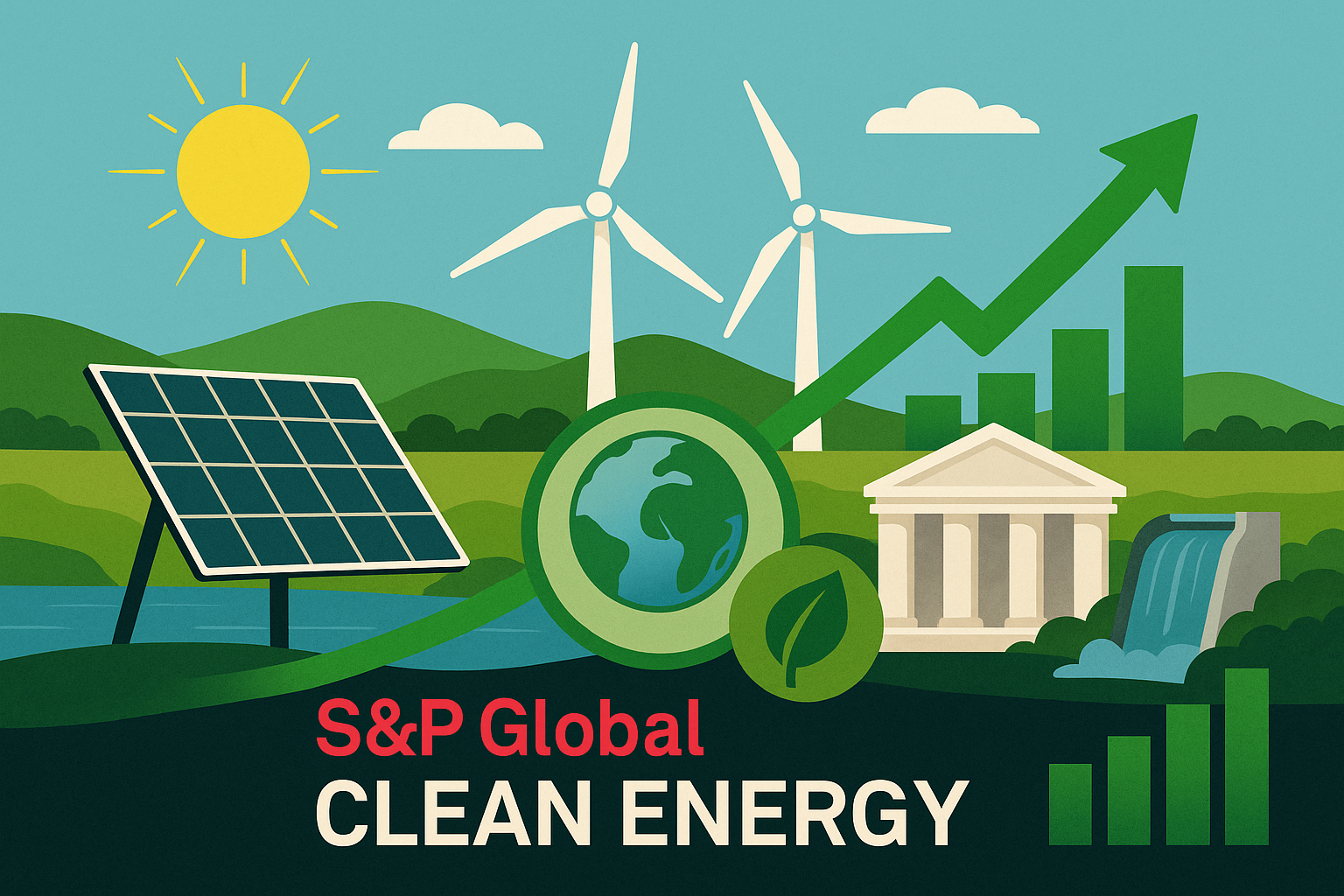Measures the performance of companies worldwide whose primary business lines generate power, technology or equipment for renewable and low-carbon energy—thus providing investors a focused, investible gauge of the energy-transition opportunity set. S&P Global

1. Purpose and Evolution
Launched in 2007, the index initially held 30 names but, after several methodology consultations, it now targets 100 constituents to broaden diversification while still preserving pure-play exposure. Beginning in 2024, the family was renamed S&P Global Clean Energy Transition to emphasise its role in tracking the shift away from fossil fuels. S&P Global
2. Construction at a Glance
| Step | Rule |
|---|---|
| Starting Universe | S&P Global BMI (≈ 14 000 stocks) |
| Exposure Score | Companies earn 1 .0, 0.75 or 0 based on revenue from solar, wind, hydro, geothermal, bio-energy or related equipment. S&P Global |
| Selection | Top 100 by the product of market cap × exposure score, subject to liquidity screens. |
| Weighting | Capped float-adjusted market cap: score 1.0 names max ≅ 8 %, score 0.75 names max ≅ 4 %. |
| Rebalance | Semi-annual (April, October) with quarterly fast-entry rules for IPOs or upgrades. |
Consequently, pure-play renewable operators command larger weights, whereas diversified utilities receive smaller allocations.
3. Snapshot (April 2025)
| Metric | Value |
|---|---|
| Index Level | 1 554 |
| Float-Adj. Market Cap | US $560 billion |
| Dividend Yield | 1.1 % |
| Regional Split | U.S. 32 %, Europe 29 %, China 17 %, Rest 22 % |
| Top Holdings* | First Solar 8.4 %, Enphase 6.6 %, Vestas 5 %, Iberdrola 4 %, Orsted 3.9 % |
*Weights capped at the April 2025 rebalance.
4. Recent Performance (USD Total Return)
| Year | Index | MSCI ACWI | Main Driver |
|---|---|---|---|
| 2022 | –21 % | –17 % | Higher rates hurt long-duration renewables |
| 2023 | +10 % | +21 % | Supply-chain drag on wind offset solar rebound |
| 2024 | +18 % | +12 % | IRA tax credits and EU cap-ex surge |
| YTD 2025 | +6.7 % | +6.1 % | Battery-storage build-out lifts equipment makers |
Although volatility (~25 %) outpaces broad equities, the index’s beta to oil prices is near zero, enhancing diversification.
5. Why Investors Use It
- Pure-Play Clean-Energy Beta – One ticker delivers global renewables exposure without fossil dilution.
- ETF Underpinning – Funds such as ICLN and SPGT replicate the index, giving daily liquidity.
- Policy Barometer – Index moves often anticipate subsidy shifts and climate-policy announcements.
- Benchmarking Tool – Active green-energy mandates gauge alpha versus this transparent yard-stick.
6. Strengths & Caveats
| Strengths | Limitations |
|---|---|
| Exposure-score method curbs green-washing | Capped weights still leave top five at ~30 % |
| Global coverage (DM + EM) | Currency swings add tracking noise |
| Semi-annual reviews keep purity high | Supply-chain shocks can swing earnings sharply |
| Aligns with EU SFDR Article 9 funds | Critical-minerals miners mostly excluded |
7. Themes to Watch
- Grid-scale Storage Boom: Lithium-iron batteries and flow-battery newcomers could enter at the next review.
- Hydrogen Ramp-Up: Electrolyser leaders may gain exposure scores as revenue crosses the 25 % threshold.
- Off-shore Wind Cost Resets: Turbine giants winning re-priced tenders may reclaim lost margins.
- Policy Tailwinds: Carbon-border adjustments in the EU and expanded U.S. tax credits could lift index earnings by 15 % over two years.
Key Takeaways
The S&P Global Clean Energy Index selects the highest-exposure green-power companies worldwide, weights them by capped float-adjusted market cap, and rebalances semi-annually to maintain purity. Consequently, it remains the go-to benchmark for investors seeking concentrated yet diversified clean-energy exposure amid the accelerating transition.